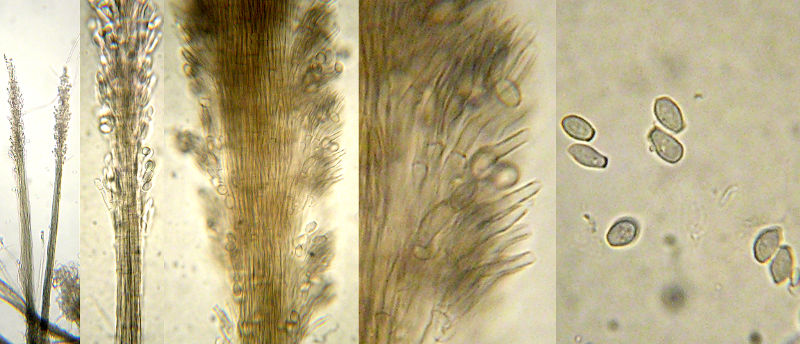Main page <> Index of descriptions <> Previous description <> Cephalotrichum <> Next description
Cephalotrichum

The dark brown conidiophores are united in a fascicle to form a long compound fruiting structure (synnema). The upper half of the synnema is covered with flask-shaped annellides giving rise to chains of grey-brown spores (conidia). In C. stemonitis there is an accessory Echinobotryum spore form arising from the stalks of the synnemata and on the surrounding hyphae. Other species, such as C. microsporum, pictured at right, have only one spore form. Trichurus species are similar, differing in having straight to coiled hairs arising among the annellides. Young synnemata of Trichurus species may not have well developed hairs and may be mistaken for a species of Cephalotrichum. Related to Scopulariopsis. Many of the species were placed in Doratomyces in the older literature. Common in soil, dung, and decaying plant materials.
Classification: Microascaceae. Holomorph unknown. Ref: Morton and Smith 1963